Planning an unforgettable adventure through Vietnam? This comprehensive Vietnam Travel Itinerary guides you through 15 days of discovery, blending stunning landscapes, rich history, vibrant culture, delectable cuisine, and unique local experiences. From the bustling energy of Hanoi to the serene beauty of the Mekong Delta, prepare to immerse yourself in the heart and soul of this fascinating country. As a seasoned explorer of global cultures and experiences, I’ve crafted this itinerary based on my own incredible journey, ensuring you uncover the best of what Vietnam has to offer.
Navigating Vietnam can seem daunting, but with the right plan, it transforms into an exhilarating journey. This Vietnam Travel Itinerary is designed to take you from the dynamic North, through the historic Central region, and down to the lush South, offering a diverse taste of Vietnamese life and landscapes. Expect a mix of city exploration, rural tranquility, historical insights, and culinary delights. Let’s embark on this adventure!
North Vietnam: Ancient Charm and Natural Wonders
Your Vietnam Travel Itinerary begins in the captivating North, a region steeped in tradition and blessed with breathtaking natural beauty. This part of the journey introduces you to the historical depth of Vietnam and one of its most iconic natural wonders. Get ready for a mix of urban exploration and scenic tranquility.
Hanoi: A Blend of History and Modern Life
Arriving in Hanoi, Vietnam’s capital, is an immediate sensory experience. The city pulses with a unique energy, where ancient traditions meet modern life amidst a symphony of buzzing scooters. After a long flight, settle into your accommodation and allow yourself time to adjust.
One of the first natural steps is to explore the area around Hoan Kiem Lake, often considered the city’s historical and cultural heart. This tranquil green space offers a peaceful contrast to the surrounding urban chaos. Legend has it that a magical sword was retrieved from this lake by a golden turtle to help Emperor Le Thai To fight off invaders, only to be returned to the lake afterwards. This story adds a layer of mystique to your stroll.
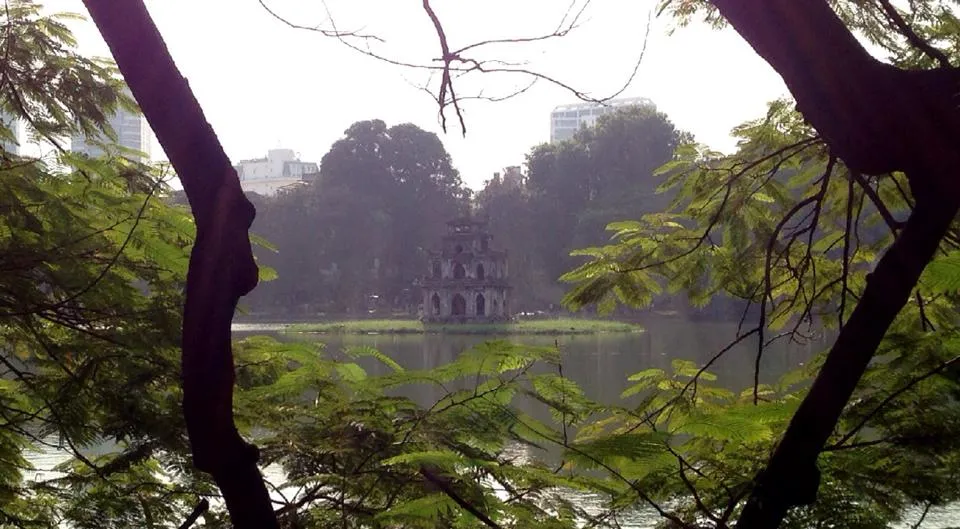
Navigating Hanoi’s streets, especially crossing them, is an adventure in itself. The sheer volume of scooters and cars moving in a seemingly chaotic yet somehow coordinated flow is a true cultural immersion. It requires patience, observation, and a confident step. Finding a rooftop bar near the lake offers a fantastic vantage point to observe this urban ballet while enjoying a local Bia Hoi, a fresh, light draft beer.
What to Eat in Fort Worth – A Culinary Deep Dive
Discover the Top Restaurants in Denver – A Culinary Journey
Discover Where to Visit in Las Vegas
As dusk settles, a traditional water puppet show offers a unique glimpse into Vietnamese folk art. This ancient performance, where puppeteers stand in waist-deep water behind a screen and manipulate lacquered wooden puppets, tells stories of rural life, history, and legends set to traditional music. It’s a fascinating cultural experience that transports you away from the city’s hustle.
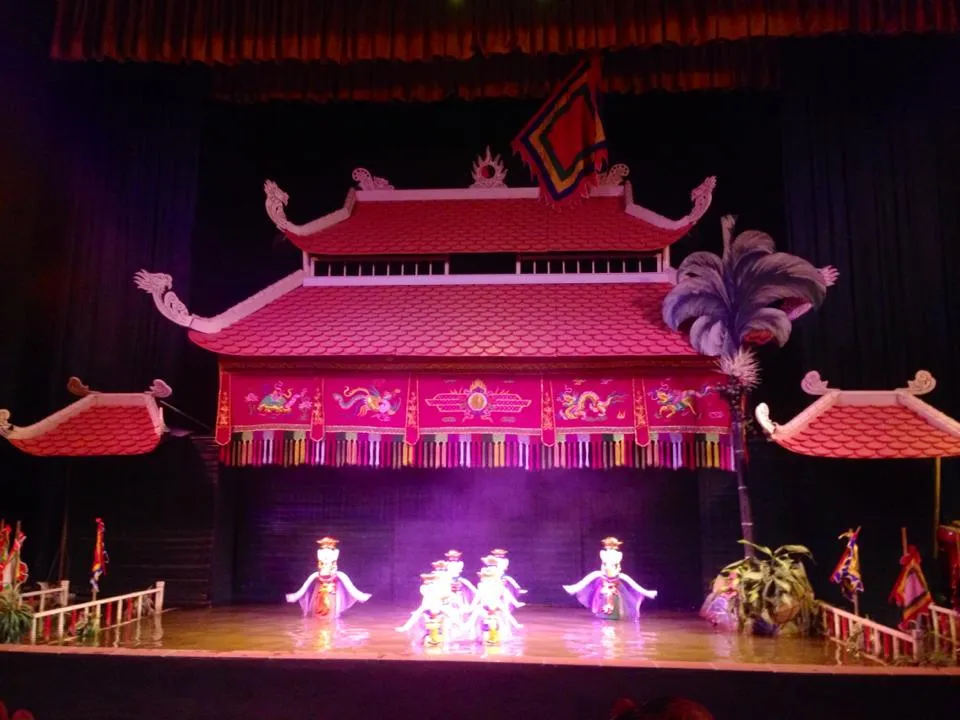 Beyond the city center, a bike ride into Hanoi’s rural outskirts reveals a different pace of life. Pedaling through rice fields and colorful villages, surrounded by the sounds of nature and passing local farmers, provides a serene escape. This contrast highlights the diverse facets of life in and around the capital, offering a deeper appreciation for the country’s agricultural roots before continuing your Vietnam Travel Itinerary.
Beyond the city center, a bike ride into Hanoi’s rural outskirts reveals a different pace of life. Pedaling through rice fields and colorful villages, surrounded by the sounds of nature and passing local farmers, provides a serene escape. This contrast highlights the diverse facets of life in and around the capital, offering a deeper appreciation for the country’s agricultural roots before continuing your Vietnam Travel Itinerary.
Exploring local markets, even briefly, is a vibrant experience. The sights, sounds, and smells offer an authentic slice of daily life. Seeing vendors expertly chopping sugarcane or selling live poultry connects you to the source of the ingredients that make Vietnamese cuisine so renowned.
Halong Bay: Kayaking Through Limestone Karsts
Leaving Hanoi behind, your Vietnam Travel Itinerary takes a dramatic turn towards the breathtaking Halong Bay. This UNESCO World Heritage site is famous for its thousands of towering limestone karsts and islets topped with dense rainforests, rising dramatically from the emerald waters of the Gulf of Tonkin. It’s a scene that feels almost surreal, a true highlight for any visitor.
The best way to experience Halong Bay is by boat, typically a traditional “junk” boat, though modern vessels offer similar experiences. Sailing into the bay as the sun begins to set, gliding past the majestic islands, is an incredibly peaceful and visually stunning experience. The tranquility on the water contrasts beautifully with the earlier hustle of Hanoi.
 Halong Bay isn’t just about cruising; it offers opportunities for more active exploration. Biking on some of the larger, more accessible islands provides a chance to see rural life away from the mainland. Paths might be sandy or muddy, adding a touch of adventure, but the chance to pass water buffaloes grazing in fields or observe locals engaged in daily activities like clam digging offers authentic glimpses into coastal life.
Halong Bay isn’t just about cruising; it offers opportunities for more active exploration. Biking on some of the larger, more accessible islands provides a chance to see rural life away from the mainland. Paths might be sandy or muddy, adding a touch of adventure, but the chance to pass water buffaloes grazing in fields or observe locals engaged in daily activities like clam digging offers authentic glimpses into coastal life.
Kayaking is perhaps the most intimate way to experience the bay’s grandeur. Paddling through hidden lagoons, around the bases of karsts, and even through low cave openings (depending on the tide) allows you to appreciate the scale and intricate details of the landscape up close. It’s an activity that connects you directly with the environment and provides unforgettable perspectives of this natural wonder.
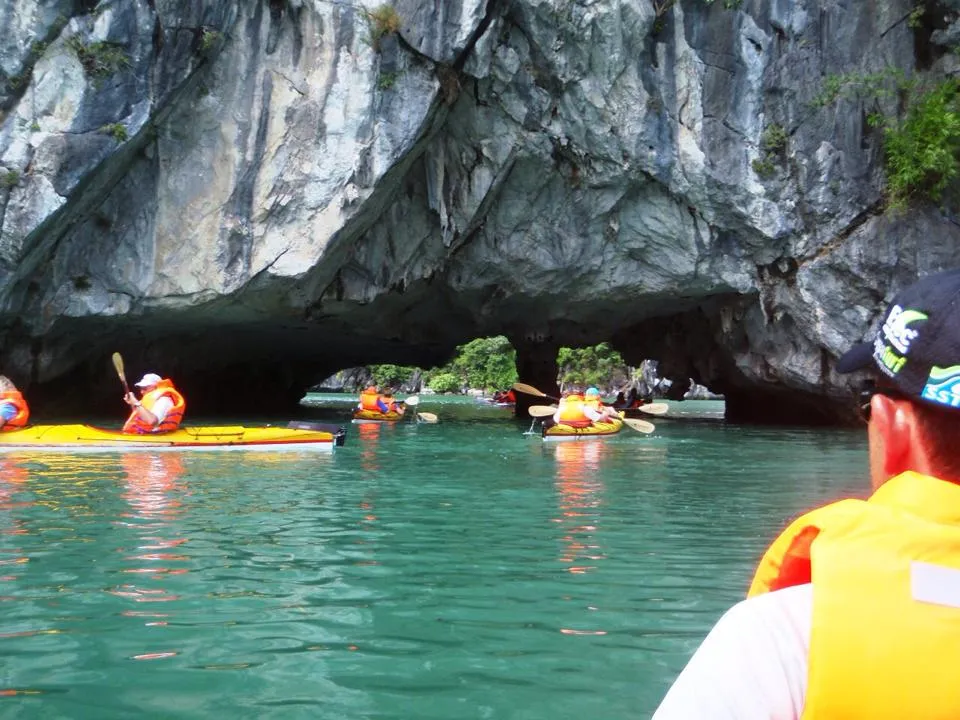 Visiting one of the traditional floating villages in Halong Bay, such as Vung Vieng, offers a poignant look at a unique way of life. Generations of families have lived in these simple homes built on logs, making their living directly from the sea. Observing their daily routines and seeing how tourism has brought changes, while still maintaining their connection to the water, is a humbling cultural experience.
Visiting one of the traditional floating villages in Halong Bay, such as Vung Vieng, offers a poignant look at a unique way of life. Generations of families have lived in these simple homes built on logs, making their living directly from the sea. Observing their daily routines and seeing how tourism has brought changes, while still maintaining their connection to the water, is a humbling cultural experience.
Exploring one of the large caves, like Sung Sot Cave (Surprise Cave), adds another dimension to the Halong Bay experience. Walking through vast chambers filled with impressive stalactites and stalagmites, often illuminated with colorful lights, feels like stepping into another world. The viewpoints from the cave’s exit often offer panoramic vistas of the bay, providing a stunning reward for the climb.
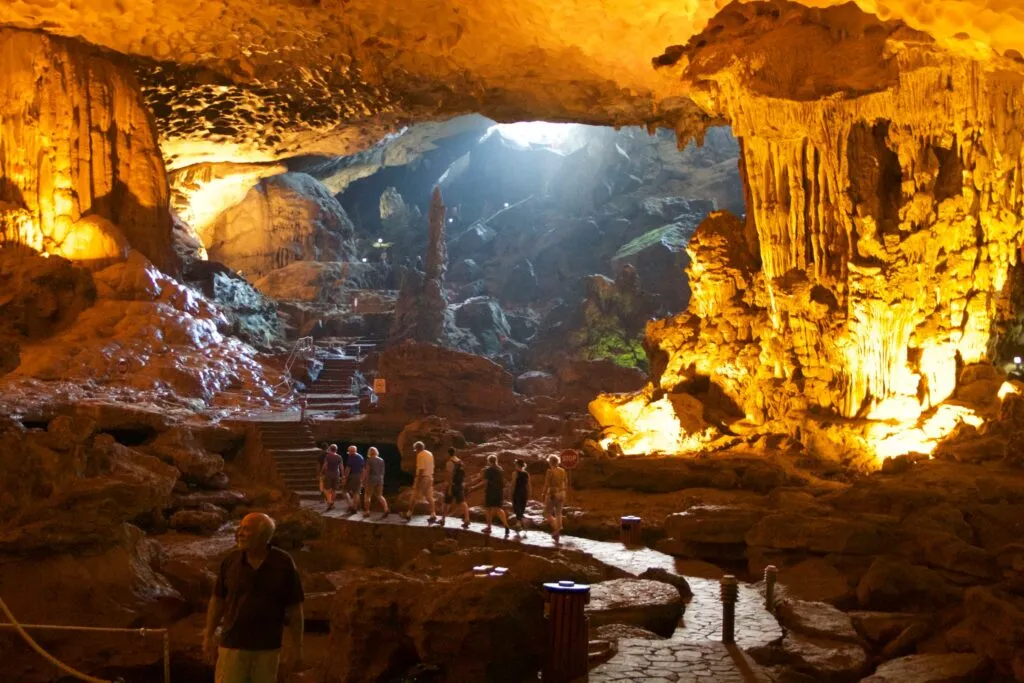
Cat Ba Island: Biking and Hiking Escapes
Cat Ba Island, the largest island in Halong Bay, serves as a base for further exploration and offers a mix of coastal charm and rugged natural beauty. A significant portion of the island is designated as Cat Ba National Park, protecting its diverse ecosystems.
Spending a couple of nights here allows for deeper dives into the area. A gentle bike ride into a secluded rural village like Viet Hai, nestled within the national park, provides insights into traditional life away from the tourist hubs. Enjoying a simple lunch here connects you with the local community.
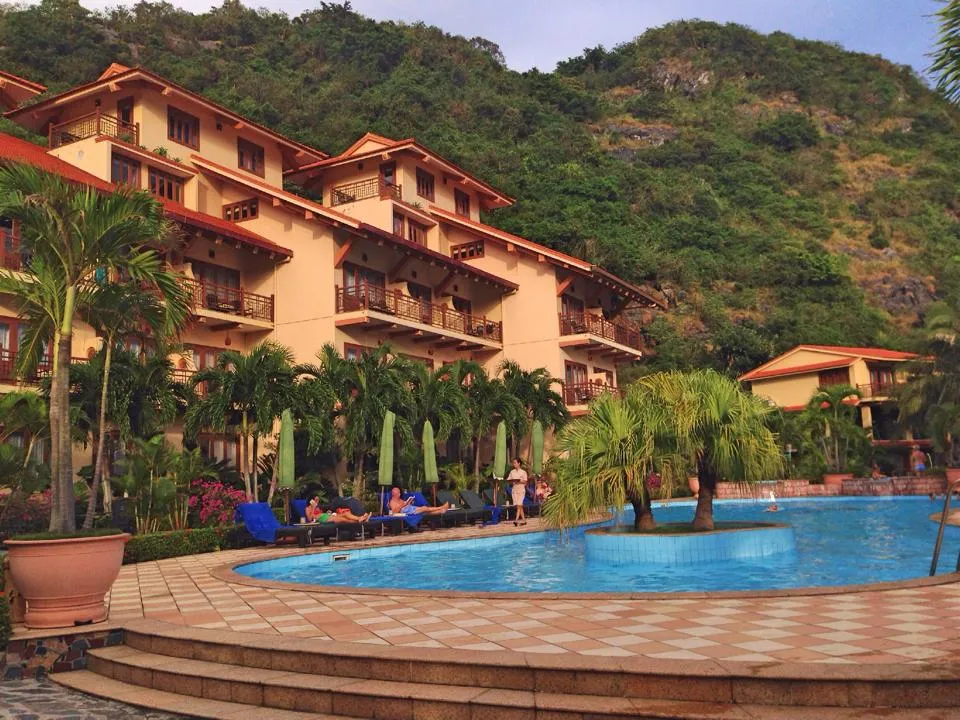 For those seeking a physical challenge, hiking in Cat Ba National Park is highly rewarding. Trails can be steep and rugged, but the panoramic views from elevated viewpoints overlooking Halong Bay and its countless islands are absolutely spectacular. It’s a perspective that truly showcases the immense scale and beauty of the karst landscape.
For those seeking a physical challenge, hiking in Cat Ba National Park is highly rewarding. Trails can be steep and rugged, but the panoramic views from elevated viewpoints overlooking Halong Bay and its countless islands are absolutely spectacular. It’s a perspective that truly showcases the immense scale and beauty of the karst landscape.
After exploring the natural wonders of Cat Ba, a return journey to Hanoi marks the end of the northern leg of your Vietnam Travel Itinerary. The transition from the serene bay and island life back to the bustling capital highlights the varied experiences Vietnam offers within a short distance.
Central Vietnam: Imperial History and Coastal Beauty
The central region of Vietnam boasts a rich imperial past and stunning coastal scenery. This part of your Vietnam Travel Itinerary delves into history, architecture, and some of Vietnam’s most atmospheric towns.
Hue: Imperial City and Perfume River Tales
Flying from Hanoi to Hue, you arrive in a city steeped in history, serving as the imperial capital of the Nguyen Dynasty from 1802 to 1945. Hue is home to numerous temples, pagodas, and the impressive Imperial City, a UNESCO World Heritage site.
Settling into a hotel along the Perfume River (Song Huong) provides a central base. The river, named for the fragrant flowers that fall into it during autumn, is a significant geographical and cultural feature of the city.
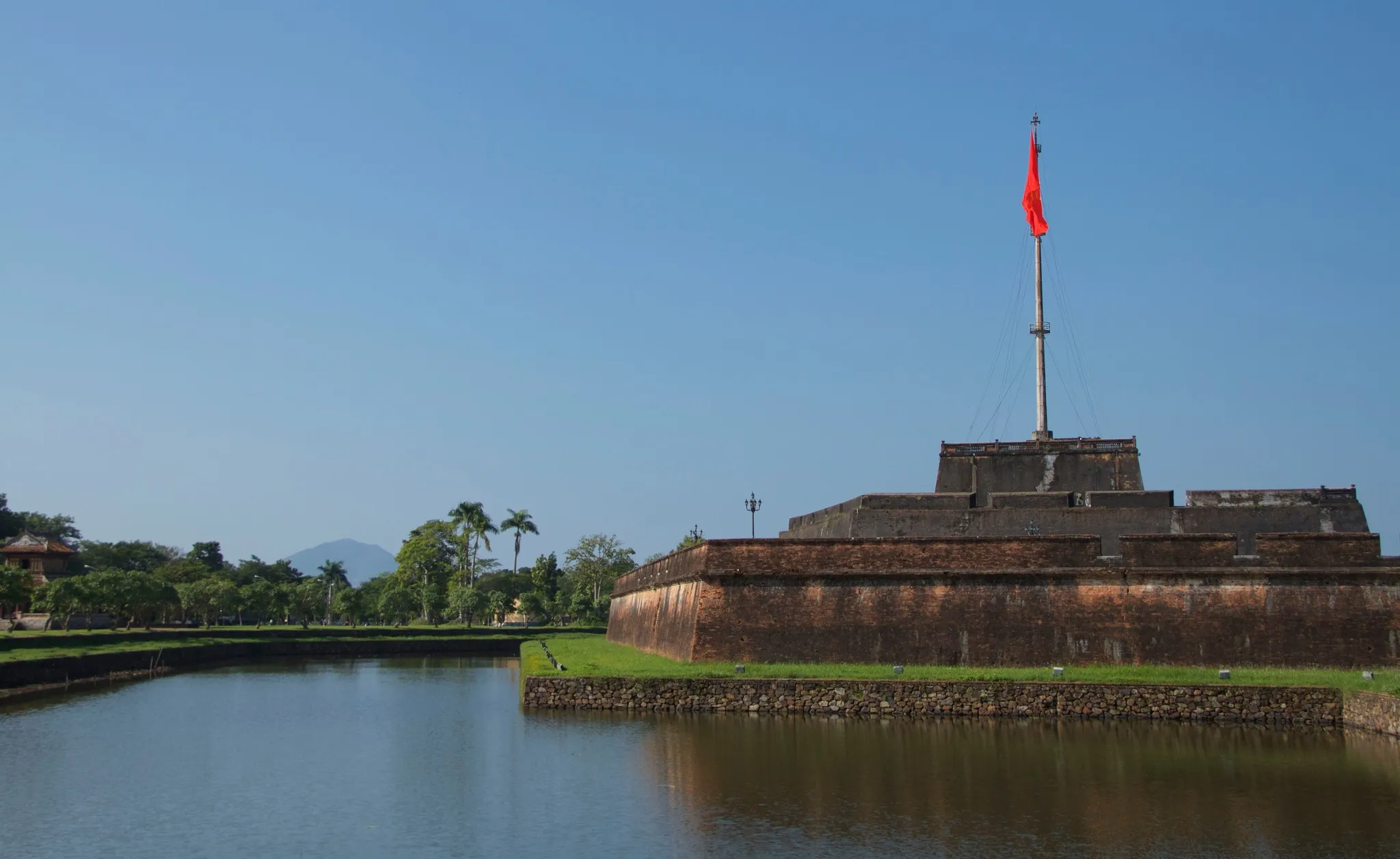 Exploring Hue by cyclos (rickshaws) offers a charming and relatively relaxed way to see the city’s streets and soak in the atmosphere. It’s a different perspective compared to the ubiquitous scooters, allowing you to observe daily life at a slower pace.
Exploring Hue by cyclos (rickshaws) offers a charming and relatively relaxed way to see the city’s streets and soak in the atmosphere. It’s a different perspective compared to the ubiquitous scooters, allowing you to observe daily life at a slower pace.
The highlight of Hue is undoubtedly the Imperial City (the Citadel). This vast complex, a walled enclosure within the city, contains palaces, temples, gates, and the Forbidden Purple City, where the emperors and their families resided. Walking through the grounds, you can imagine the grandeur and complexity of the imperial court. Much of the site was damaged during the Vietnam War, but ongoing restoration efforts are bringing its former glory back to life.
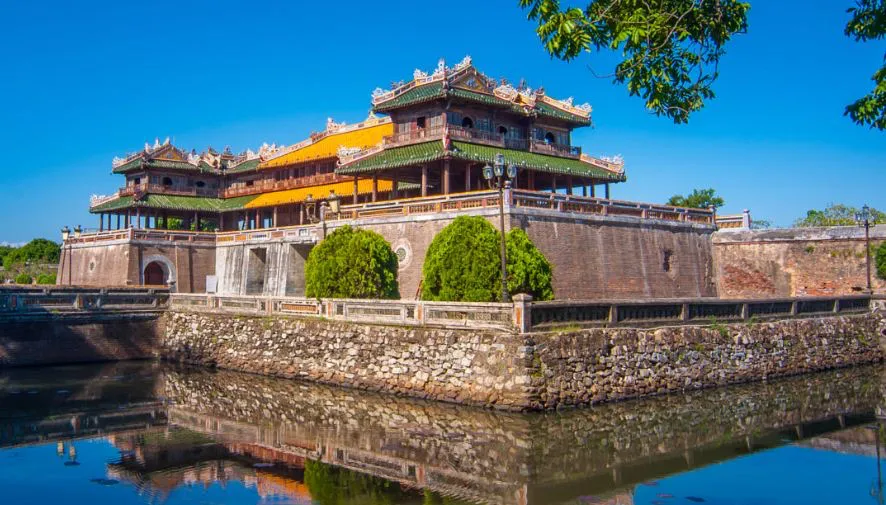 A traditional dragon boat cruise on the Perfume River is a must-do. Cruising down the river offers scenic views and provides access to historical sites located along its banks. A key stop is the Thien Mu Pagoda, an iconic seven-story pagoda and a significant symbol of Hue. Its elegant architecture and prominent location on a hill overlooking the river make it a picturesque and culturally important site. Each level of the pagoda is dedicated to a Manushi-Buddha, reflecting its spiritual significance.
A traditional dragon boat cruise on the Perfume River is a must-do. Cruising down the river offers scenic views and provides access to historical sites located along its banks. A key stop is the Thien Mu Pagoda, an iconic seven-story pagoda and a significant symbol of Hue. Its elegant architecture and prominent location on a hill overlooking the river make it a picturesque and culturally important site. Each level of the pagoda is dedicated to a Manushi-Buddha, reflecting its spiritual significance.
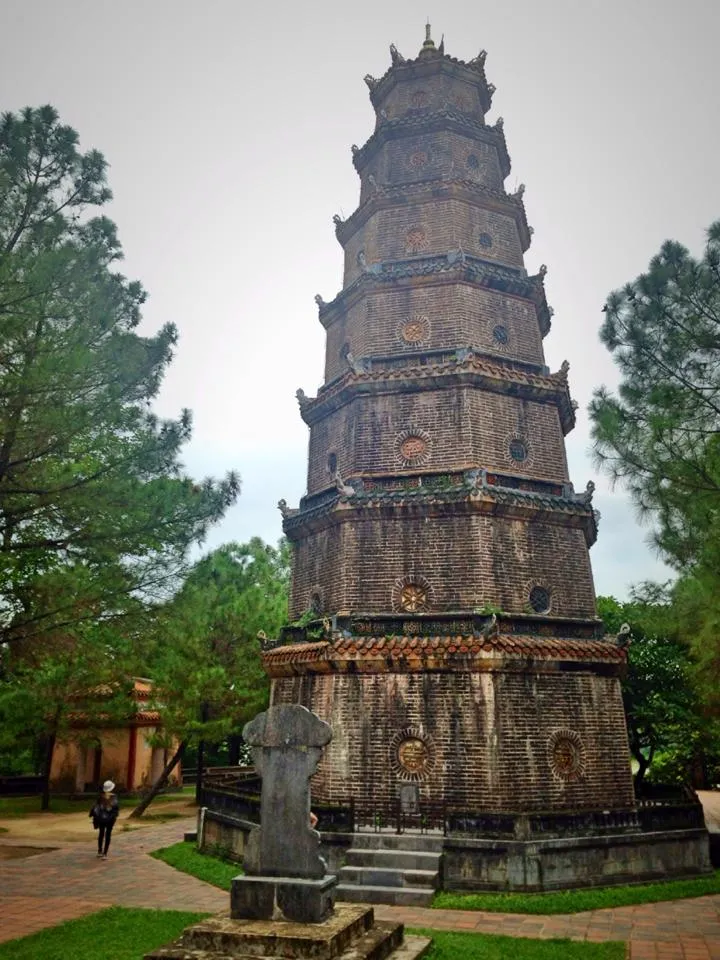 Biking around Hue allows you to explore both the urban areas and the surrounding countryside, passing ornate temples and getting a sense of the local environment outside the main historical sites. This blend of historical exploration and gentle activity makes Hue a captivating stop on your Vietnam Travel Itinerary.
Biking around Hue allows you to explore both the urban areas and the surrounding countryside, passing ornate temples and getting a sense of the local environment outside the main historical sites. This blend of historical exploration and gentle activity makes Hue a captivating stop on your Vietnam Travel Itinerary.
Hoi An: Lanterns, Ancient Port, and Culinary Delights
A scenic drive south from Hue brings you to the charming town of Hoi An, a former major Southeast Asian trading port from the 15th to 19th centuries. Hoi An’s well-preserved Ancient Town is another UNESCO World Heritage site, known for its unique blend of Vietnamese, Japanese, and Chinese architecture.
Hoi An is often called the “lantern city” for good reason. The streets and markets are adorned with countless colorful silk lanterns, which are particularly magical when lit up at night. Walking through the pedestrian-friendly Ancient Town, especially in the evening, is a truly enchanting experience. Many lanterns are set adrift on the Thu Bon River that flows through the town, creating a mesmerizing spectacle.
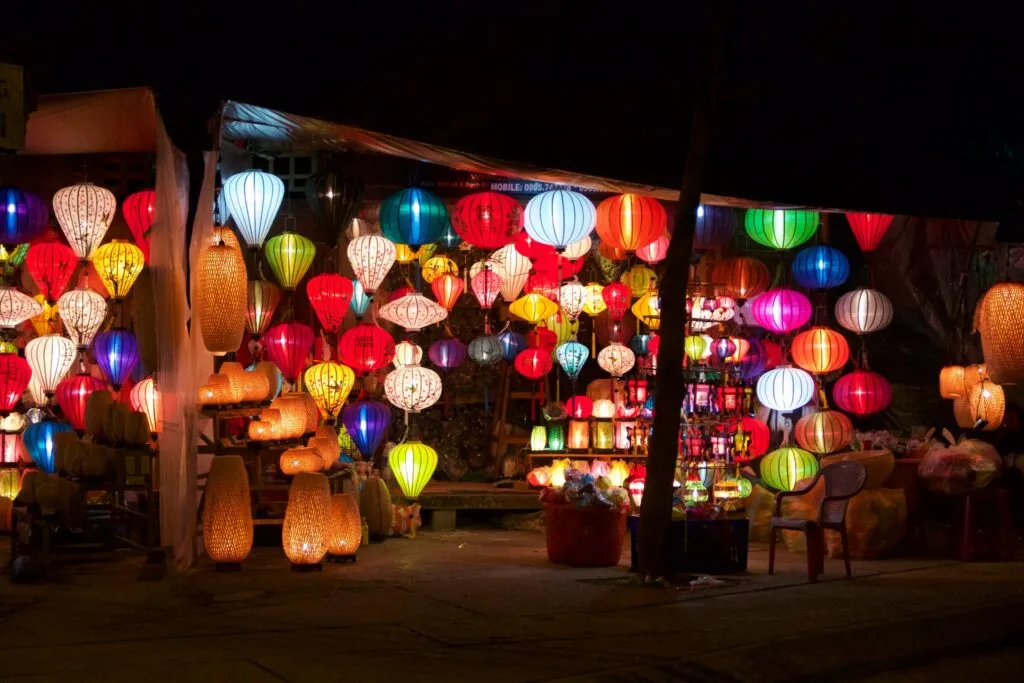 Beyond the atmospheric town center, biking is a great way to explore the surrounding areas. A ride to Tra Que vegetable village introduces you to local farming practices. Meeting farmers and seeing how they cultivate herbs and vegetables using traditional methods, like the double watering can, provides a connection to the agricultural heart of the region.
Beyond the atmospheric town center, biking is a great way to explore the surrounding areas. A ride to Tra Que vegetable village introduces you to local farming practices. Meeting farmers and seeing how they cultivate herbs and vegetables using traditional methods, like the double watering can, provides a connection to the agricultural heart of the region.
Hoi An is a culinary hotbed, and taking a cooking class is a fantastic way to delve into Vietnamese cuisine. Learning to prepare local dishes firsthand, understanding the ingredients and techniques, enhances your appreciation for the food you’ll enjoy throughout your trip. Vietnamese cooking often balances fresh herbs, spices, and savory flavors, creating incredibly vibrant and healthy meals.
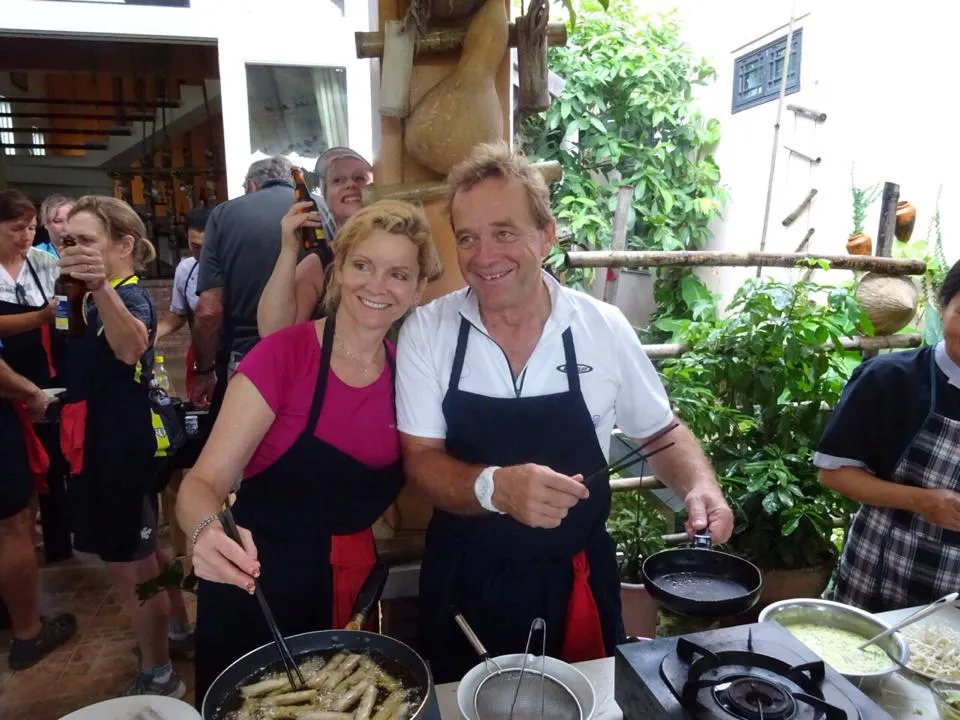 A bike ride towards the coast leads to beautiful beaches. While the paths can be rustic, encountering water buffaloes along the way adds to the authentic rural experience. The beach itself offers a chance to relax and enjoy the coastline after exploring the town and countryside. Hoi An’s mix of history, culture, delicious food, and accessible rural life makes it a beloved destination on any Vietnam Travel Itinerary.
A bike ride towards the coast leads to beautiful beaches. While the paths can be rustic, encountering water buffaloes along the way adds to the authentic rural experience. The beach itself offers a chance to relax and enjoy the coastline after exploring the town and countryside. Hoi An’s mix of history, culture, delicious food, and accessible rural life makes it a beloved destination on any Vietnam Travel Itinerary.
South Vietnam: Bustling Cities and Mekong Delta Life
Your Vietnam Travel Itinerary concludes in the dynamic South, a region defined by the sprawling metropolis of Ho Chi Minh City and the vital, water-centric life of the Mekong Delta. This final leg offers a contrast between urban energy and tranquil riverine landscapes.
Ho Chi Minh City: Saigon’s Vibrant Energy
A flight from Da Nang (near Hoi An) takes you to Ho Chi Minh City, still widely known as Saigon. This is Vietnam’s largest and most modern city, a bustling economic hub with a fast pace of life. The urban landscape here feels distinctly different from Hanoi, often featuring modern high-rises alongside historical landmarks.
Exploring the city’s energy is an experience in itself. The sheer volume of traffic is even more intense than Hanoi, but the city offers a wealth of attractions. While a full exploration requires more time, a brief stay can include visiting key sites and soaking in the atmosphere.
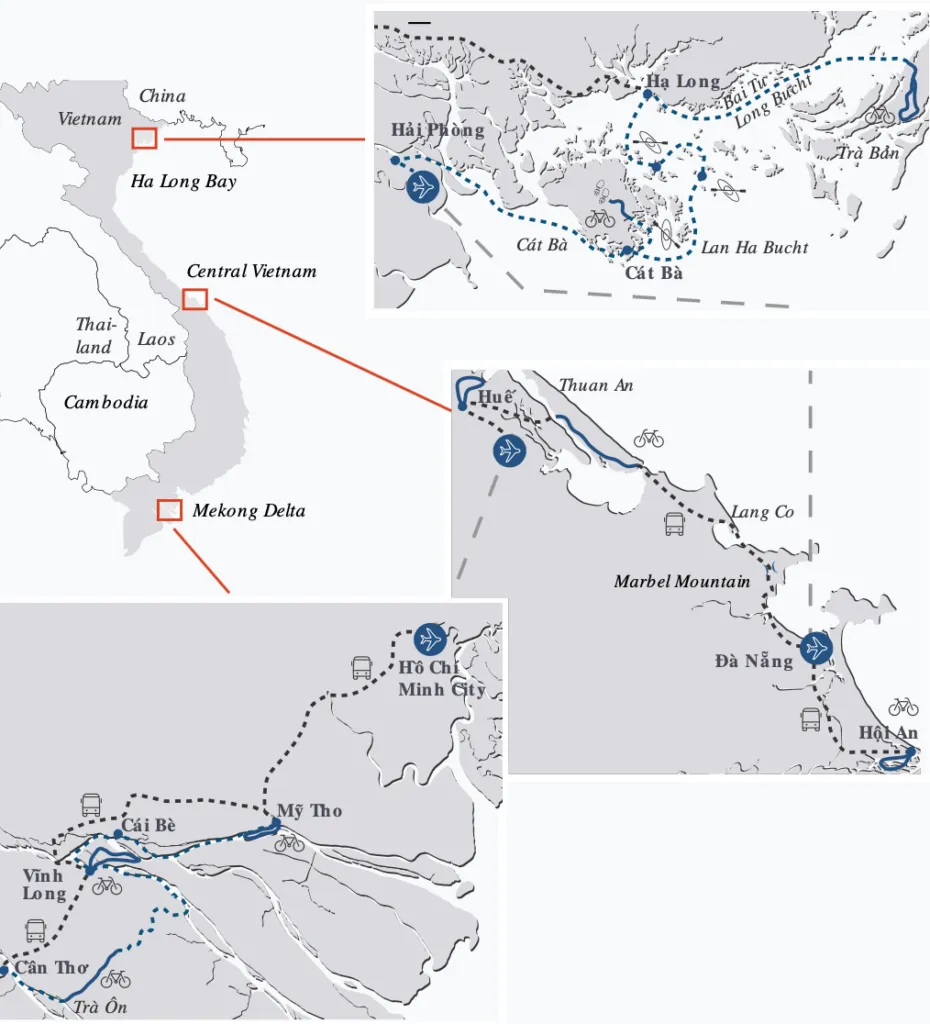 Historical sites related to the Vietnam War are poignant reminders of the country’s recent past. Visiting the War Remnants Museum, for instance, provides a powerful, though often confronting, perspective on the conflict through photographs and exhibits.
Historical sites related to the Vietnam War are poignant reminders of the country’s recent past. Visiting the War Remnants Museum, for instance, provides a powerful, though often confronting, perspective on the conflict through photographs and exhibits.
Evenings can be spent enjoying the city’s vibrant nightlife. Rooftop bars offer impressive views of the illuminated skyline. The Rex Hotel’s rooftop bar, famous for hosting the “Five O’Clock Follies” (media briefings during the war), provides a historical backdrop for a drink and offers live music, allowing you to unwind after your travels.
Mekong Delta: Life on the Waterways
Just a few hours south of Ho Chi Minh City lies the Mekong Delta, a vast network of rivers, swamps, and islands crucial for agriculture and local life. Often called Vietnam’s “rice bowl,” the delta’s waterways are the main thoroughfares for commerce and transportation.
Boarding a boat (like a smaller junk or cruise vessel) in a town like My Tho is the perfect way to begin exploring the delta’s intricate web of channels and tributaries. The Mekong River itself is a muddy brown color due to the rich sediment it carries, vital for fertilizing the surrounding land.
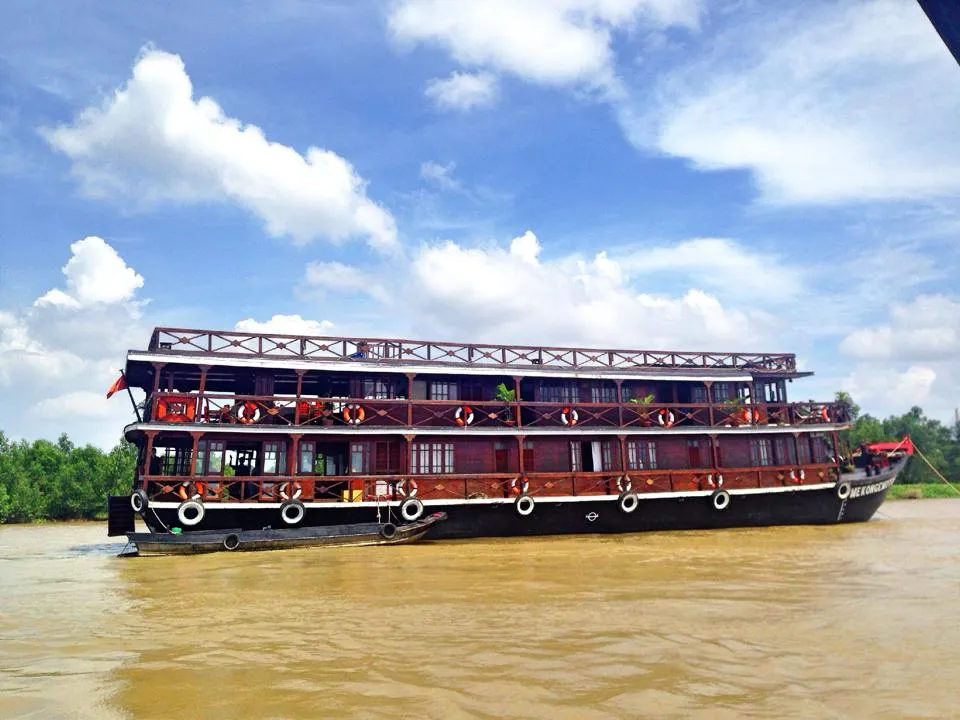 Life in the Mekong Delta revolves around the water. Boat trips take you past stilt houses, fruit orchards, and fish farms. Cycling on the islands, like Ben Tre, Ngu Hiep, Vingh Long, or Traon, allows you to see rural delta life up close, pedaling along narrow paths shaded by palm trees.
Life in the Mekong Delta revolves around the water. Boat trips take you past stilt houses, fruit orchards, and fish farms. Cycling on the islands, like Ben Tre, Ngu Hiep, Vingh Long, or Traon, allows you to see rural delta life up close, pedaling along narrow paths shaded by palm trees.
Stopping at local workshops offers fascinating insights into regional industries. Learning how rice paper (used for spring rolls) is made or visiting a honey farm provides a glimpse into the crafts and produce that sustain the local economy. These interactions highlight the ingenuity and hard work of the delta communities. Observing schoolchildren or families going about their day offers a glimpse into the simple, community-focused life here, often met with warm smiles from the locals.
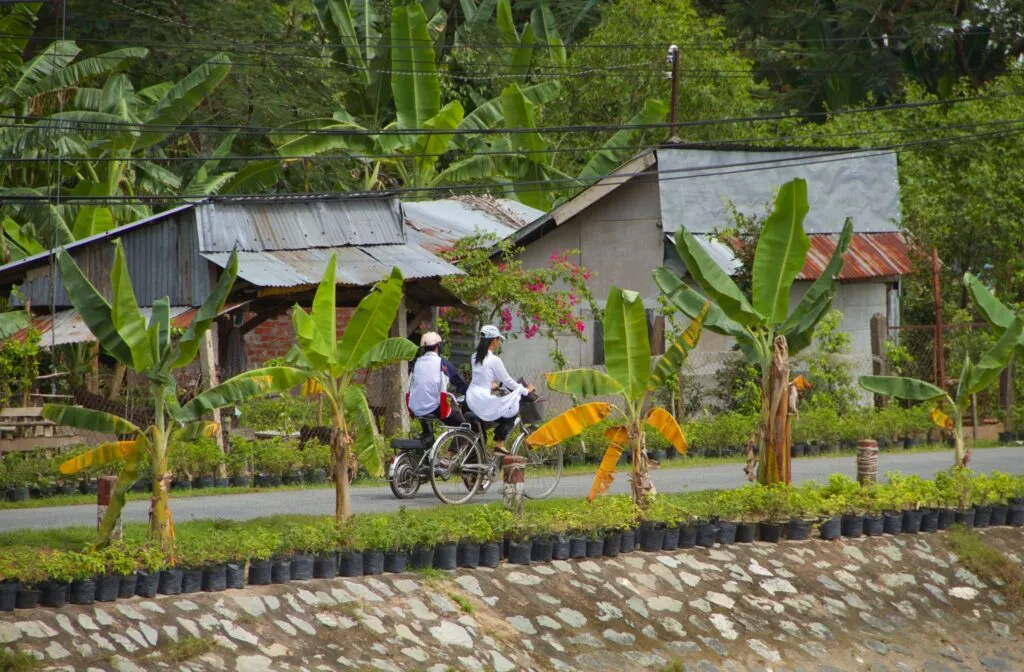 One of the most iconic delta experiences is visiting a floating market, such as Cai Rang near Can Tho. These markets are bustling hubs where vendors sell produce and goods directly from their boats. Seeing the variety of food and goods being traded on the water, with long poles displaying the wares high above the boats, is a vibrant cultural spectacle and a photographer’s delight. Although modern transportation has increased, floating markets remain a soul of delta commerce.
One of the most iconic delta experiences is visiting a floating market, such as Cai Rang near Can Tho. These markets are bustling hubs where vendors sell produce and goods directly from their boats. Seeing the variety of food and goods being traded on the water, with long poles displaying the wares high above the boats, is a vibrant cultural spectacle and a photographer’s delight. Although modern transportation has increased, floating markets remain a soul of delta commerce.
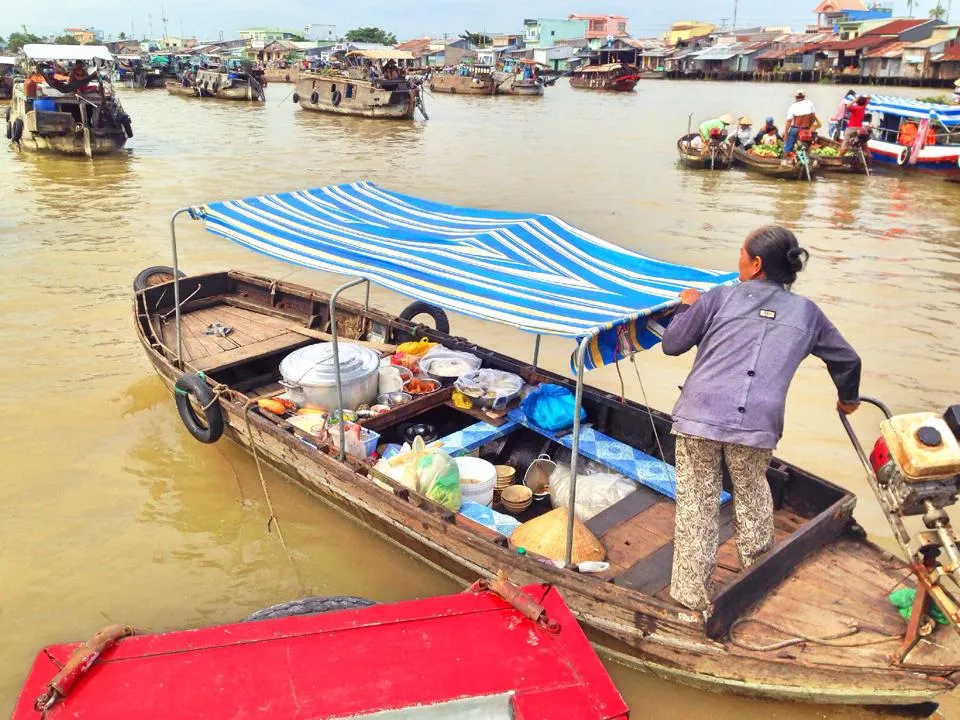 Exploring narrow canals by smaller boat or canoe is another highlight. Gliding peacefully through palm-lined channels, away from the wider rivers, offers a sense of tranquility and allows you to appreciate the dense tropical vegetation and listen to the sounds of nature.
Exploring narrow canals by smaller boat or canoe is another highlight. Gliding peacefully through palm-lined channels, away from the wider rivers, offers a sense of tranquility and allows you to appreciate the dense tropical vegetation and listen to the sounds of nature.
Essential Tips for Your Vietnam Travel Itinerary
To make your Vietnam Travel Itinerary as smooth and enjoyable as possible, consider these practical tips:
- Best Time to Visit: Vietnam’s climate varies by region. Generally, spring (February-April) and autumn (September-November) offer pleasant weather across the country. However, research specific regional weather patterns for your travel dates.
- Visa Requirements: Check visa requirements for your nationality well in advance. E-visas are available for many countries.
- Getting Around: Domestic flights are efficient for covering long distances (Hanoi-Hue, Da Nang-HCMC). Buses and trains are options for shorter hops. Within cities, taxis (use reputable apps like Grab), cyclos, and walking are common. Navigating traffic requires caution!
- Currency: The official currency is the Vietnamese Dong (VND). ATMs are widely available in cities. While credit cards are accepted in many hotels and larger establishments, cash is essential for markets, street food, and smaller vendors.
- Language: Vietnamese is the official language. English is spoken in tourist areas, hotels, and by many tour guides. Learning a few basic Vietnamese phrases is appreciated by locals.
- Food and Drink: Vietnamese food is incredibly diverse and delicious. Don’t be afraid to try street food, but choose vendors that are busy and look clean. Drink bottled water only and avoid ice unless you are sure it’s made from purified water.
- Internet Access: Wi-Fi is widely available in hotels, cafes, and restaurants. Local SIM cards with data are affordable and easy to purchase.
- Packing: Pack light, comfortable clothing suitable for a tropical climate. Include rain gear, insect repellent, sun protection, and comfortable walking shoes. If biking, consider appropriate gear.
- Cultural Sensitivity: Be mindful of local customs. Dress modestly when visiting temples or pagodas. Always ask permission before taking photos of people. Bargaining is common in markets but should be done respectfully.
FAQ – Your Vietnam Travel Itinerary Questions Answered
Q: Is 15 days enough time for a comprehensive Vietnam Travel Itinerary?
A: Yes, 15 days allows you to comfortably visit the key highlights of North, Central, and South Vietnam without feeling too rushed. It provides a good balance of travel time and exploration.
Q: What is the best way to get around Vietnam?
A: For long distances (e.g., between major cities like Hanoi, Hue/Da Nang, and Ho Chi Minh City), domestic flights are the most time-efficient option. For shorter distances or within cities, buses, trains, taxis, and motorbike taxis (Grab) are common.
Q: Is it safe to eat street food in Vietnam?
A: Yes, street food is a highlight of Vietnamese cuisine and generally safe if you choose vendors who are popular with locals and maintain good hygiene standards. Look for places with high turnover of customers and freshly prepared food.
Summary of Your 15 Days in Vietnam
Completing a 15-day Vietnam Travel Itinerary offers an incredibly rich and diverse experience. From the historical layers of Hanoi and Hue to the natural wonders of Halong Bay and the Mekong Delta, and the cultural charm of Hoi An, Vietnam captivates at every turn. The combination of exploring ancient sites, engaging in outdoor activities like biking and kayaking, savoring the world-renowned cuisine, and interacting with the famously friendly Vietnamese people creates a journey filled with lasting memories. This Vietnam Travel Itinerary promises not just a trip, but a deep dive into a resilient and vibrant culture.
